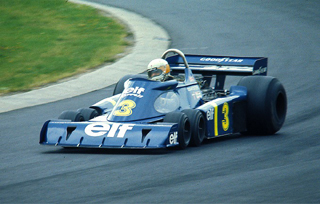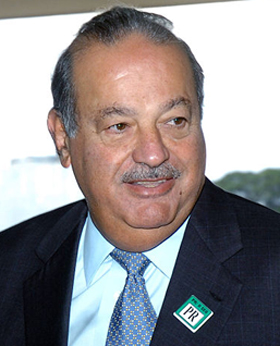|
|

|
|
The Involvement of Car Manufacturers in Formula One- guest writer Mark Martin of moneysupermarket.com explores the issue with intriguing insights into life in sponsorship's fast lane ...
In the build-up to the new Formula One season it has been announced that the Japanese car manufacturer Infiniti will be sponsoring world champions Red Bull Racing in 2011.
This has been heralded as a momentous event - not just because of the financial boost the team will receive to aid their fight against Ferrari, but also because it signals the return of car manufacturers to Formula One after the mass exodus which came on the back of the credit crunch. However, is this really such a good thing for either Infiniti or Formula One?
• Traditional F1 involvement
The early years of the sport were characterised by the domination of teams owned by car manufacturers such as Alfa Romeo, Ferrari and Mercedes. The companies were not only aiming to build brand awareness and recognition of their manufacturing abilities, but also endeavouring to challenge their engineers to come up with innovative technologies which would ultimately provide them with a competitive advantage over their rivals in the road car market.
However, these benefits were not enough to keep Alfa Romeo in the sport, with the Italian manufacturer withdrawing from motor racing in 1953 on the back of their parent company's financial problems. This was followed by the withdrawal of Mercedes in 1955, after an accident at Le Mans which killed eighty spectators, thus giving added weight to the suggestion that the manufacturers were not reliable participants.

Jodie Scheckter driving a Tyrrell-Ford P34 at the German Grand Prix in 1976
|
The sport was kept alive by 'privateer' teams like Lotus and Tyrrell, whose sole purpose was Formula One racing.
Car manufacturers returned tentatively, with Honda, Mercedes and Renault ultimately entering the sport to derive the same benefits that they had done in the past. However, this time their strategy was different, as they largely entered as partners to the existing privateer teams who had succeeded them. This approach led to the formation of Williams-Renault, Stewart-Ford and Jordan-Honda.
The agreements made were very similar, in that each manufacturer would provide the team with engines and technology - the development of which would be beneficial to their road car designs. This was better for Formula One because any withdrawal would not immediately lead to the withdrawal of the team and the redundancy of all the staff in it.
However, the economic boom of the late 1990s and early part of the millennium led to manufacturers repeating the mistakes of old. Honda bought the BAR team from British American Tobacco, who were forced to withdraw following the tobacco advertisement ban, while Renault bought the old Benetton team. The recession resulted in the majority of car manufacturers pulling out, leading to the collapse of the Toyota team and also leaving BMW Sauber, Honda and Renault in financially perilous situations and seeking new owners.
A major attraction of sports sponsorship to any company is fan affiliation, and there was little doubt in the mind of many marketing academics that by leaving these teams and their employee's jobs on the line, the car manufacturers had ultimately done more harm to their brand image through their F1 involvement than good.
• The future of car manufacturer involvement
By 2010, Formula One was starting to find its feet again in the latest post-manufacturer era. Honda had become Brawn GP in 2009 and ultimately dominated the championship, leading to the team being bought by Mercedes who had been one of only two manufacturers to maintain the same level of investment in the sport on the back of the recession.

Carlos Slim, currently the world's richest man
|
This was followed up by the Red Bull Racing team winning the 2010 world championship, Renault finding a new owner in investment firm Genii Capital and Sauber starting to recover with the help of sponsorship provided by the world's richest man, Carlos Slim.
Then, prior to the start of the 2011 season, it was announced that the Infiniti car company would become a 'partner' of Red Bull Racing. This has been heralded as fantastic news by those in the sport who believe that it is a sign that car manufacturers have recovered from the recession and are now starting to return to F1 once again.
The Japanese company has been attracted by the new 'energy recover' systems which are starting to become a regular feature in the sport, with Red Bull stating that the alignment to Infiniti will help them match the development of manufacturer-supported teams like Ferrari and Mercedes when the sport adopts new regulations in 2013, which will see energy recover systems have a greater impact on performance. The effect of these hybrid systems has been amplified by the recent freeze on engine development, which has seen each manufacturer's engine power output become largely similar, thereby negating the major advantage of being partnered or owned by a car manufacturer.
However, the future development of hybrid systems will likely result in the same spending race as was seen during the engine development wars and will therefore once again place greater importance on being joined to car manufacturers.
The question which must be asked is whether it is sensible for either the teams or the manufacturers to follow this route and repeat mistakes which have happened twice before.
The car manufacturers financing this hybrid war will ultimately pull out of their F1 sponsorship/partnership arrangements upon the first signs of trouble in the economy - and teams will once again be left heavily in debt, hence placing the jobs of their employees in danger. This will ultimate render any fan affiliation built up by their involvement in F1 void and likely leave their brand image worse off than it had been before. For Infiniti this won't be as much of a problem because brand awareness is low outside of the United States and Japan.
But perhaps better known manufacturers should think twice before repeating mistakes from the past …
Note: the views expressed above are those of the author and do not necessarily reflect those of uksponsorship.com Ltd.
|
|

 Latest UK sponsorship news
Latest UK sponsorship news
